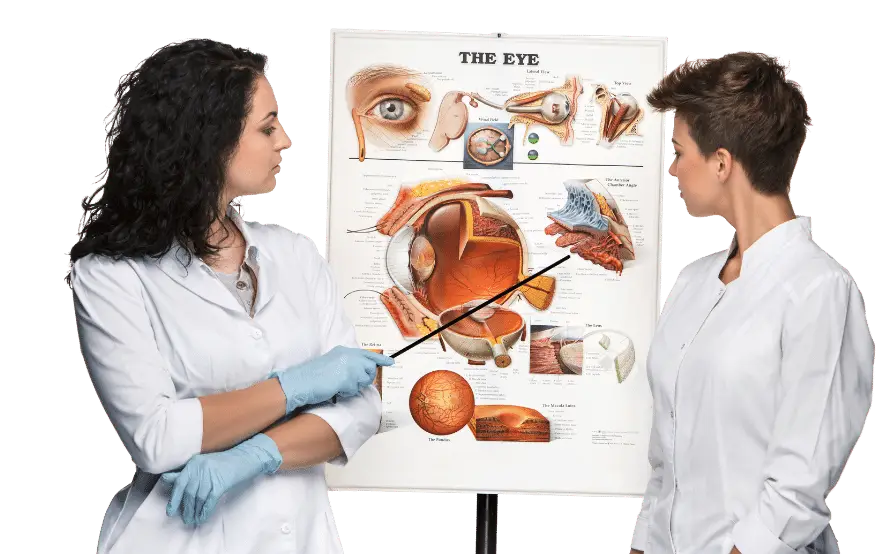Cataract surgery
The only treatment for cataracts is surgical removal and replacement of the cloudy lens to restore the transparency of the visual axis. The modern surgical technique is extremely safe with very few serious complications, and the intraocular lens allows the rehabilitation of one eye so that it matches the vision in the other eye that has not yet undergone cataract surgery.
The only treatment for cataracts is surgical removal and replacement of the cloudy lens to restore the transparency of the visual axis. The modern surgical technique is extremely safe with very few serious complications, and the intraocular lens allows the rehabilitation of one eye so that it matches the vision in the other eye that has not yet undergone cataract surgery.
The only treatment for cataracts is surgical removal and replacement of the cloudy lens to restore the transparency of the visual axis. The modern surgical technique is extremely safe with very few serious complications, and the intraocular lens allows the rehabilitation of one eye so that it matches the vision in the other eye that has not yet undergone cataract surgery.

For more information and to schedule a consultation call:
Or leave details and we will get back to you as soon as possible
Cataract surgery
Under normal conditions, humans are born with a natural intraocular lens which is usually transparent and focuses the light rays optimally for the rest of the eye’s systems. When cloudiness appears in the lens (usually with age) then a cataract is actually formed.
What is cataract surgery?
Cataract surgery – surgical treatment
The only treatment for cataracts is surgical removal and replacement of the cloudy lens to restore the transparency of the visual axis.
The modern surgical technique is extremely safe with very few serious complications, and the intraocular lens allows the rehabilitation of one eye so that it matches the vision in the other eye that has not yet undergone cataract surgery.
Surgical techniques – the operation is usually performed on a day-hospital basis under local anesthesia provided topically (drops), using a block (injection in the eye area) or injection of an analgesic substance into the anterior chamber of the eye.
Sometimes controlled sedation is used. General anesthesia is only necessary for patients who cannot reliably cooperate with local anesthesia (eg, cognitive impairment or other communication barrier) or perhaps those who have had a complication of local anesthesia in the other eye.
Experienced surgeons can perform the surgery itself in 10 to 20, but patients typically spend 30 to 60 minutes in the operating room for positioning, sterile drape, additional preparations, and settling the patient after surgery.
The two techniques that are most widely used for cataract surgery are:
Phacoemulsification, which is performed in over 99% of surgeries in reformed countries, and extracapsular cataract extraction, which is still very popular in third world countries.


Choice of lens in cataract surgery
Most patients in reformed countries will have artificial intraocular lenses (IOL) implanted during cataract surgery, except in some forms of intraocular inflammation (uveitis), in some cases of high myopia, and in case of unusual intraoperative complications.
An intraocular lens can be implanted secondarily in a subsequent operation.
The alternatives to lens implantation are aphakic glasses or contact lenses.
However, patients are often not satisfied with these solutions and therefore in over 99% of surgeries an intraocular lens is implanted during surgery.
Intraocular lens implantation
Broadly speaking, there are four types of intraocular lenses (in reality there are hundreds of different types):
monofocal, multifocal, accommodative and toric.
In general, monofocal and multifocal lenses are equally effective in improving distance vision.
Multifocal intraocular lenses contain optical properties that generally allow some of the light rays to be focused for distant vision and some of the light rays to be focused for vision from closer distances.
Therefore, these lenses can have unwanted effects.
Patients with multifocals report side effects such as glare or halos.
Toric lenses can reduce or eliminate the need for astigmatism correction with glasses or contact lenses.
Multifocal, accommodative and serial lenses are more expensive than monofocal lenses and are usually offered as “premium” lenses.
The additional expense is usually paid by the patient because these lenses, which reduce dependence on glasses, are not covered by insurance in most countries of the world.
A 2014 review based on four studies in the UK, Italy and Germany, which compared accommodative lenses with monofocals, found moderate-quality evidence of a modest improvement in near vision after six months.
Therefore, these lenses did not “conquer the market”.
Overall, more data are needed to determine the relative merits of monofocal, multifocal, accommodative, and toric lenses.
Since these lenses are offered to patients at a higher price, it is advisable to have a conversation with the patient before the operation in order to make sure that the patients’ expectations are realistic.
